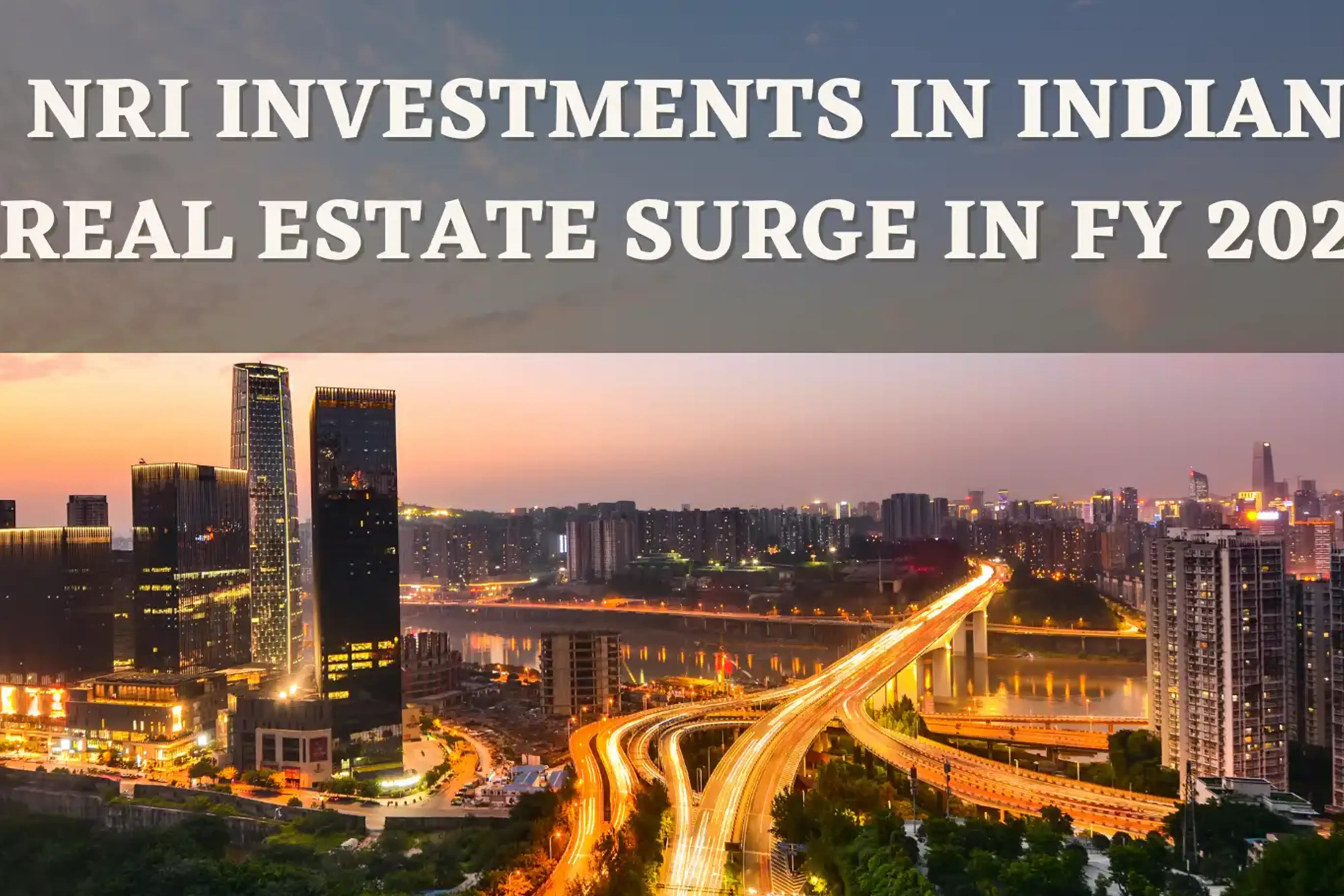The Backdrop
On an overall basis, the Indian economy has performed quite well in the last couple of years with IMF’s database suggesting India’s contribution to world growth increasing from 7.6% during 2000-2008 to 14.5% in 2018. The pro-reform measures by the government in the preceding years imbibed confidence and improved sentiments, positioning India as a lucrative business destination with more investment inflows.
There were investments in sectors like Augmented Reality, Artificial Intelligence, IoT, Robotic Process Automation, Blockchain, and few others, which are the trends of the day. Technological advancement, demand-supply dynamics, policy measures for more ease of doing business, were the driving forces for the real estate industry as it adjusted itself in the dust settling environment of the post reforms such as RERA, Land Reforms, GST, and demonetization. Government measures to boost the sector like “Housing for All by 2022”, PradhanMantriAwasYojna, 100 Smart City Programme and few others also boosted the factors favorable for the growth of the industry.
The office space absorption in India increased in 2018 with inflated demand surpassing the all-time figures as the absorption space crossed 47 million Sq. Ft. with the office leasing activity dominated by cities like Delhi-NCR, Bangalore, and Hyderabad. The office absorption growth rate was estimated to be 16% higher than the previous year, with the new completion of commercial real estate to be estimated at 43 million square feet with fairly steady vacancy levels.
Structural reforms, along with the legislation of Real Estate Investment Trust (REITs) have compelled developers to build quality office spaces and have imbibed investment interests along with increasing stiff competition. Listing of Blackstone-Embassy, a REIT joint venture has already been incorporated and is operational in 2019. This has perhaps opened the doors for an open market condition for similar REITs to enter the market by other major players. The economic reforms, along with the changing nature of jobs, have renewed the interests of major global players along with the domestic ones, which played a catalytic role in the growth of the office segment.
The overall absorption of office space has been quite impressive with the major IT cities like Bengaluru, Chennai, and Hyderabad, witnessing a 23% rise in demand for office space in the year 2019 compared to last year with a gross absorption rate of 30.6 million square feet. The total absorption of the previous three quarters of 2019, according to the estimates, has surpassed the absorption of 2017 and 2018 with 33 million square feet. The years 2017 and 2018 had witnessed a net office space absorption of 28.7 million Sq. Ft. and 33.2 million Sq. Ft. respectively. Although the scenario in the commercial sector was optimistic, there is no denying the fact that the industry was in a sort of doldrums in the last 4 or 5 years, but there were enough measures by the government to revive the sector. A revival in the commercial and office segment certainly implies more demand being perceived by the residential sector. Let’s have a look at how the overall industry fared in 2019 for us to know how the scene would look like in 2020.
Real Estate Sector 2019
The year 2019 witnessed a liquidity crisis in the sector, which was triggered by the fall of IL& FS. The banks and the NBFCs stopped giving loans or more credits to the sector affecting the industry. The ancillary industries dependent on real estate like cement, iron, paints, steel, electrical equipment, etc. or even timber and furniture started to feel the heat. Naturally, all wanted the government to intervene. Just a couple of months back, the government announced the bailout package of Rs. 25, 000 crores to expedite the process of revival of the real estate sector.
This measure of mammoth contribution had made the sector and the stakeholders quite optimistic as the experts say that the construction of more than five lakhs apartments was stuck due to the non-availability of the last-minute funding. The statistics reveal that most of these projects were in the metropolis of Mumbai (MMR) and the National Capital Region (NCR). Although the government was appreciated for this measure, there were restrictions in the usage of the money by the financial institutions to ensure the returns of the money to the government exchequer. There was a restriction of Rs. 2 crore for MMR and Rs. 1.5 crore and Rs. 1 crore respectively for metros and non-metro cities. The experts opined that due to the imposed price restrictions by the government about 4.95 lakhs of housing units or projects might have been benefitted from this measure of the government and the positive effects of this step of the government will only be perceived in the markets like Pune, Chennai, NCR, etc.
Albeit, the government might have invested a colossal amount, the experts believe that the supply of the projects would increase. Still, the completion of the unsold inventory and unfinished projects wouldn’t suffice the capital required, as the majority of it has already been sold, for which a limited amount of capital would only flow in. The experts claim that the sector has already undergone price correction in the major pockets of the industry like NCR and other metros of India and presently undergoing time correction where the price is stable for a long time.
In these markets, the developers are offering big discounts, claims the market observers. Even then, the market watchers are optimistic about the demand as it shows an upward trend. The main reason is the increment of affordability due to economic progress. Statistics from various sources and the consultants reveal the fact that there has been an improvement of affordability in markets like Mumbai, which is one of the costliest markets of India.
The survey reports say that the Home Price Affordability Index (HPAI) has increased across cities remarkably in the last decade and, most significantly, in the last eight years. An HPAI ratio of 1 or 100% means the affordability of the buyers is cent percent in terms of the price. In Mumbai, for instance, this index has been witnessed to have risen from 47% in 2011 to 90% in 2019, which is a very healthy indicator for the realty sector. This essentially means the houses and homes are more affordable by the investors and the end-users than in the past.
Emerging Markets
Though the commercial and the residential sector paints a fairly optimistic picture that had to be readjusted and tailor-made, there are emerging sectors too that contributed to the growth of the industry. They are REITs, Co-working, and Co-living spaces which are the emerging trends making the realty sector more hopeful. Although the first REIT launched by Embassy group and Blackstone in 2019 has been functional with many more in the pipeline, the masses have embraced investments in the commercial real estate through the blockchain and the market place model. In these cases, the people are the fractional owners of the commercial properties, which is similar to the REIT model with a bit of difference in the structure of transactions, which the experts believe can emerge as a prospective alternative for investments in the commercial sector.
Apart from the REIT and commercial real estate, the expansion of the co-living and co-working spaces have also been very steep in the nation’s major markets and cities. The co-working spaces accounted for 13% of the total office space absorption in 2019, which increased from 5% in 2017. This means the sector is growing in leaps and bounds, and so is the case for co-living spaces too, which is opening up with newer options like co-living options for the senior citizens, students, and other demographic profiles.
Real Estate 2020
Going forward, the trends suggest that the increasing quest of people for shared living spaces would boost the demand in the real estate industry of the metros and other two or three-tier cities too. A surge in the demand for warehousing, e-commerce, and startups are also a positive trend with an anticipated resultant boost in the realty industry. As these segments get more organized, the demand for real estate would surge in leaps and bounds.
However, these trends suggest that the demand is on the climb with a clear indication of an upward influx, which certainly has to be met by the stakeholders of the sector. The industry is already in a liquidity crunch, and the government measures have been relieving it to an extent. The scenario suggests more credit requirement is the burning need of the industry in the coming year.
Although the government’s measure of Alternative Investment Fund (AIF) for the affordable housing segment which has been granted the industry status along with partial credit guarantee for banks by buying back the assets of NBFCs would provide some kind of relief, a small percentage of the problem would only be solved. Along with measures by the government to boost the demand for the affordable housing sector and the residential sector, there should be enough initiatives to pump in more liquidity. That would cater to the extra demand of the industry as discussed and would help the sector along with the ancillary industries like cement, steel, etc. The experts believe that any development, although imperative in 2020, would be sluggish and a bit painstaking too.


